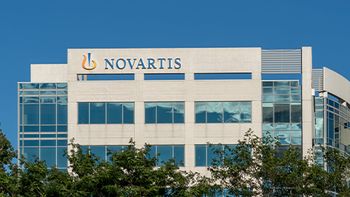
LogiPharma Europe 2024: A Digital Capability Transformation
Panel discussion uncovers how to alter one’s digital know-how for use in temperature-controlled supply chain.
One of several focuses at this year’s LogiPharma Europe—cold chain—was on full display at a panel discussion titled “How can you transform digital capabilities in your temperature-controlled supply chain to improve visibility, quality and reactivity?”
Tony Fonk, president and CEO of SpotSee, moderated the panel, and was joined by Amy Shortman, a logistics representative with Despir Logistics; Cesar Gil Martinez, director of procurement logistics (EMEA), Bayer; Tomas Fant, temperature-controlled logistics project lead, Pfizer; Marie Berranger, cold chain logistics project & launch manager, Galderma; and Linus Wollentz, senior manager, Envirotainer.
Fonk took the discussion various directions by focusing on a multiple taking points, including digital maturity, the meaning of great or perfect in this regard, and much more. Their insights are provided below in Q&A format.
Tony Fonk: What does digital maturity mean to you, especially in terms digital capabilities and temperature-controlled operations?
Amy Shortman: For us, digital maturity is really about understanding the value of what the data that we're feeding them through those digital services provides. So it's really about making sure that we understand how we're using visibility and using that to really drive down risk and add value to the customer. What we're seeing in the market in a general sense is that not all players within the supply chain ecosystem and logistics ecosystem are at the same level of digital maturity.
Cesar Gil Martinez: Digital maturity is a journey—you never have enough digital maturity. All companies are investing, but whatever you do nowadays could be outdated in a few months. We see more and more now with artificial intelligence and machine learning, etc., so we are all in on that in that journey. I wouldn't say everything is bells and whistles at the moment, and in terms of real-time visibility of the supply chain—and I’m only speaking for Bayer—but we have different levels and different divisions as well.
Fonk: From a North Star perspective, what does “great” or “perfect” mean in terms of digital maturity?
Tomas Fant: I was thinking that maybe “great” means that my boss can sleep well, because I think in supply chain, we're always very worried what's going to happen next. Are we prepared? Are we resilient enough? Can we react fast enough? And with a lot of these digital platforms, we're getting more visibility, we're more in control. And of course, we will now start layering in more automation and machine learning and trying to mine some of that. But ultimately, what great looks like is that you have peace of mind because you feel you're in control.
Marie Berranger: For me, it revolves around what makes a difference for the patient. So we look a lot internally or what it brings. And of course, it really is brings up but in the end, how about our patient? Does it have a positive impact on our patients, customers, and consumers? I'm not always sure.
Obstacles surrounding integration
When it comes to the main challenges of using/implementing digital technologies or data in temperature-controlled supply chains, 65% of session attendees expressed integration challenges with partners, followed by breaking down siloes at 24%.
Concerning the latter, Shortman noted that performing a thorough analysis on what the objectives are, as to what value one wants to look out for—while making sure that that's something that's measurable and agreement between the parties—is critical.
Reference
Fonk T, Shortman A, Gil Martinez C, Fant T, Berranger M, Wollentz L. How can you transform digital capabilities in your temperature-controlled supply chain to improve visibility, quality and reactivity? April 16, 2024. LogiPharma Europe 2024. Lyon.
Newsletter
Stay ahead in the life sciences industry with Pharmaceutical Commerce, the latest news, trends, and strategies in drug distribution, commercialization, and market access.





